The text below is Chapter III of Michel Chossudovsky’s book entitled: The Globalization of War. America’s Long War against Humanity, Global Research Publishers, Montreal, 2015. To order the book directly from Global Research click here
This chapter provides a historical perspective of US war plans directed against Iran, including the use of a preemptive nuclear attack, using low yield, “more usable” tactical nuclear weapons.
This analysis is of particular relevance to the Biden administration’s ongoing threats to attack Iran.
***
While one can conceptualize the loss of life and destruction resulting from present-day wars including Iraq and Afghanistan, it is impossible to fully comprehend the devastation which might result from a Third World War, using “new technologies” and advanced weapons, until it occurs and becomes a reality. The international community has endorsed nuclear war in the name of world peace. “Making the world safer” is the justification for launching a military operation which could potentially result in a nuclear holocaust.”
The stockpiling and deployment of advanced weapons systems directed against Iran started in the immediate wake of the 2003 bombing and invasion of Iraq. From the outset, these war plans were led by the U.S. in liaison with NATO and Israel.
Following the 2003 invasion of Iraq, the Bush administration identified Iran and Syria as the next stage of “the road map to war”. U.S. military sources intimated at the time that an aerial attack on Iran could involve a large scale deployment comparable to the U.S. “shock and awe” bombing raids on Iraq in March 2003:
American air strikes on Iran would vastly exceed the scope of the 1981 Israeli attack on the Osiraq nuclear center in Iraq, and would more resemble the opening days of the 2003 air campaign against Iraq.1
“Theater Iran Near Term” (TIRANNT)
Code named by U.S. military planners as TIRANNT, “Theater Iran Near Term”, simulations of an attack on Iran were initiated in May 2003 “when modelers and intelligence specialists pulled together the data needed for theater-level (meaning large-scale) scenario analysis for Iran.”2
The scenarios identified several thousand targets inside Iran as part of a “Shock and Awe” Blitzkrieg:
The analysis, called TIRANNT, for “Theater Iran Near Term,” was coupled with a mock scenario for a Marine Corps invasion and a simulation of the Iranian missile force. U.S. and British planners conducted a Caspian Sea war game around the same time. And Bush directed the U.S. Strategic Command to draw up a global strike war plan for an attack against Iranian weapons of mass destruction. All of this will ultimately feed into a new war plan for “major combat operations” against Iran that military sources confirm now [April 2006] exists in draft form.
… Under TIRANNT, Army and U.S. Central Command planners have been examining both near-term and out-year scenarios for war with Iran, including all aspects of a major combat operation, from mobilization and deployment of forces through postwar stability operations after regime change.3
Different “theater scenarios” for an all-out attack on Iran had been contemplated:
The U.S. army, navy, air force and marines have all prepared battle plans and spent four years building bases and training for “Operation Iranian Freedom”. Admiral Fallon, the new head of U.S. Central Command, has inherited computerized plans under the name TIRANNT (Theatre Iran Near Term).4
In 2004, drawing upon the initial war scenarios under TIRANNT, Vice President Dick Cheney instructed U.S. Strategic Command (U.S.STRATCOM) to draw up a “contingency plan” of a large scale military operation directed against Iran “to be employed in response to another 9/11-type terrorist attack on the United States” on the presumption that the government in Tehran would be behind the terrorist plot. The plan included the pre-emptive use of nuclear weapons against a non-nuclear state:
The plan includes a large-scale air assault on Iran employing both conventional and tactical nuclear weapons. Within Iran there are more than four hundred fifty major strategic targets, including numerous suspected nuclear-weapons-program development sites. Many of the targets are hardened or are deep underground and could not be taken out by conventional weapons, hence the nuclear option. As in the case of Iraq, the response is not conditional on Iran actually being involved in the act of terrorism directed against the United States. Several senior Air Force officers involved in the planning are reportedly appalled at the implications of what they are doing –that Iran is being set up for an unprovoked nuclear attack– but no one is prepared to damage his career by posing any objections.5
The Military Road Map: “First Iraq, then Iran”
The decision to target Iran under TIRANNT was part of the broader process of military planning and sequencing of military operations. Already under the Clinton administration, U.S. Central Command (U.S.CENTCOM) had formulated “in war theater plans” to invade first Iraq and then Iran. Access to Middle East oil was the stated strategic objective:
The broad national security interests and objectives expressed in the President’s National Security Strategy (NSS) and the Chairman’s National Military Strategy (NMS) form the foundation of the United States Central Command’s theater strategy. The NSS directs implementation of a strategy of dual containment of the rogue states of Iraq and Iran as long as those states pose a threat to U.S. interests, to other states in the region, and to their own citizens. Dual containment is designed to maintain the balance of power in the region without depending on either Iraq or Iran. U.S.CENTCOM’s theater strategy is interest-based and threat-focused. The purpose of U.S. engagement, as espoused in the NSS, is to protect the United States’ vital interest in the region – uninterrupted, secure U.S./Allied access to Gulf oil.6
The war on Iran was viewed as part of a succession of military operations. According to (former) NATO Commander General Wesley Clark, the Pentagon’s military road-map consisted of a sequence of countries:
[The] Five-year campaign plan [includes]… a total of seven countries, beginning with Iraq, then Syria, Lebanon, Libya, Iran, Somalia and Sudan.6 (For further details, see Chapter I)
The Role of Israel
There has been much debate regarding the role of Israel in initiating an attack against Iran.
Israel is part of a military alliance. Tel Aviv is not a prime mover. It does not have a separate and distinct military agenda.
Israel is integrated into the “war plan for major combat operations” against Iran formulated in 2006 by U.S. Strategic Command (U.S.STRATCOM). In the context of large scale military operations, an uncoordinated unilateral military action by one coalition partner, namely Israel, is from a military and strategic point almost an impossibility. Israel is a de facto member of NATO. Any action by Israel would require a “green light” from Washington.
An attack by Israel could, however, be used as “the trigger mechanism” which would unleash an all-out war against Iran, as well as retaliation by Iran directed against Israel.
In this regard, there are indications going back to the Bush administration that Washington had indeed contemplated the option of an initial (U.S. backed) attack by Israel rather than an outright U.S.-led military operation directed against Iran. The Israeli attack –although led in close liaison with the Pentagon and NATO– would have been presented to public opinion as a unilateral decision by Tel Aviv. It would then have been used by Washington to justify, in the eyes of World opinion, a military intervention of the U.S. and NATO with a view to “defending Israel”, rather than attacking Iran. Under existing military cooperation agreements, both the U.S. and NATO would be “obligated” to “defend Israel” against Iran and Syria.
It is worth noting, in this regard, that at the outset of Bush’s second term, (former) Vice President Dick Cheney had hinted, in no uncertain terms, that Iran was “right at the top of the list” of the “rogue enemies” of America, and that Israel would, so to speak, “be doing the bombing for us”, without U.S. military involvement and without us putting pressure on them “to do it”8
According to Cheney:
One of the concerns people have is that Israel might do it without being asked. …Given the fact that Iran has a stated policy that their objective is the destruction of Israel, the Israelis might well decide to act first, and let the rest of the world worry about cleaning up the diplomatic mess afterwards,9
Commenting the Vice President’s assertion, former National Security adviser Zbigniew Brzezinski in an interview on PBS, confirmed with some apprehension, yes: Cheney wants Prime Minister Ariel Sharon to act on America’s behalf and “do it” for us:
Iran I think is more ambiguous. And there the issue is certainly not tyranny; it’s nuclear weapons. And the vice president today in a kind of a strange parallel statement to this declaration of freedom hinted that the Israelis may do it and in fact used language which sounds like a justification or even an encouragement for the Israelis to do it.10
What we are dealing with is a process of joint U.S.-NATO-Israel military planning. An operation to bomb Iran has been in the active planning stage since 2004. Officials in the Defense Department, under Bush and Obama, have been working assiduously with their Israeli military and intelligence counterparts, carefully identifying targets inside Iran. In practical military terms, any action by Israel would have to be planned and coordinated at the highest levels of the U.S. led coalition.
An attack by Israel against Iran would also require coordinated U.S.-NATO logistical support, particularly with regard to Israel’s air defense system, which since January 2009 is fully integrated into that of the U.S. and NATO.11
Israel’s X band radar system established in early 2009 with U.S. technical support has “integrate[d] Israel’s missile defenses with the U.S. global missile [Space-based] detection network, which includes satellites, Aegis ships on the Mediterranean, Persian Gulf and Red Sea, and land-based Patriot radars and interceptors.”12
What this means is that Washington ultimately calls the shots. The U.S. rather than Israel controls the air defense system:
This is and will remain a U.S. radar system,’ Pentagon spokesman Geoff Morrell said.
‘So this is not something we are giving or selling to the Israelis and it is something that will likely require U.S. personnel on-site to operate.13
The U.S. military oversees Israel’s Air Defense system, which is integrated into the Pentagon’s global system. In other words, Israel cannot launch a war against Iran without Washington’s consent. Hence the importance of the so-called “Green Light” legislation in the U.S. Congress sponsored by the Republican party under House Resolution 1553, which explicitly supported an Israeli attack on Iran:
The measure, introduced by Texas Republican Louie Gohmert and 46 of his colleagues, endorses Israel’s use of “all means necessary” against Iran “including the use of military force.” … “We’ve got to get this done. We need to show our support for Israel. We need to quit playing games with this critical ally in such a difficult area”.14
In practice, the proposed legislation serves as a “Green Light” to the White House and the Pentagon rather than to Israel. It constitutes a rubber stamp to a U.S. sponsored war on Iran which uses Israel as a convenient military launch pad. It also serves as a justification to wage war with a view to defending Israel.
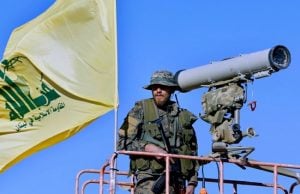
In this context, Israel could indeed provide the pretext to wage war, in response to alleged Hamas or Hezbollah attacks and/or the triggering of hostilities on the border of Israel with Lebanon. What is crucial to understand is that a minor “incident” could be used as a pretext to spark off a major military operation against Iran.
Known to U.S. military planners, Israel (rather than the U.S.A) would be the first target of military retaliation by Iran. Broadly speaking, Israelis would be the victims of the machinations of both Washington and their own government. It is, in this regard, absolutely crucial that Israelis forcefully oppose any action by the Netanyahu government to attack Iran.
Global Warfare: The Role of U.S. Strategic Command (US.STRATCOM)
In January 2005, at the outset of the military deployment and build-up directed against Iran, U.S.STRATCOM was identified as “the lead Combatant Command for integration and synchronization of DoD-wide efforts in combating weapons of mass destruction.”15 What this means is that the coordination of a large scale attack on Iran, including the various scenarios of escalation in and beyond the broader Middle East Central Asian region would be coordinated by U.S.STRATCOM. (See Chapter I).
Confirmed by military documents as well as official statements, both the U.S. and Israel contemplate the use of nuclear weapons directed against Iran. In 2006, U.S. Strategic Command (U.S.STRATCOM) announced it had achieved an operational capability for rapidly striking targets around the globe using nuclear or conventional weapons. This announcement was made after the conduct of military simulations pertaining to a U.S. led nuclear attack against a fictional country.16
Continuity in Relation to the Bush-Cheney Era
President Obama has largely endorsed the doctrine of pre-emptive use of nuclear weapons formulated by the previous administration. Under the 2010 Nuclear Posture Review, the Obama administration confirmed “that it is reserving the right to use nuclear weapons against Iran” for its non-compliance with U.S. demands regarding its alleged (nonexistent) nuclear weapons program.17 The Obama administration has also intimated that it would use nukes in the case of an Iranian response to an Israeli attack on Iran. Israel has also drawn up its own “secret plans” to bomb Iran with tactical nuclear weapons:
Israeli military commanders believe conventional strikes may no longer be enough to annihilate increasingly well-defended enrichment facilities. Several have been built beneath at least 70ft of concrete and rock. However, the nuclear-tipped bunker-busters would be used only if a conventional attack was ruled out and if the United States declined to intervene, senior sources said.18
Obama’s statements on the use of nuclear weapons against Iran and North Korea are consistent with post-9/11 U.S. nuclear weapons doctrine, which allows for the use of tactical nuclear weapons in the conventional war theater.
Through a propaganda campaign which has enlisted the support of “authoritative” nuclear scientists, mini-nukes are upheld as an instrument of peace, namely a means to combating “Islamic terrorism” and instating Western style “democracy” in Iran. The low-yield nukes have been cleared for “battlefield use”. They are slated to be used against Iran and Syria in the next stage of America’s “War on Terrorism” alongside conventional weapons:
Administration officials argue that low-yield nuclear weapons are needed as a credible deterrent against rogue states. [Iran, Syria, North Korea] Their logic is that existing war. Potential enemies realize this, thus they do not consider the threat of nuclear retaliation to be credible. However, low-yield nuclear weapons are less destructive, thus might conceivably be used. That would make them more effective as a deterrent.19
The preferred nuclear weapon to be used against Iran are tactical nuclear weapons (Made in America), namely bunker buster bombs with nuclear warheads (for example, B61-11), with an explosive capacity between one third to six times a Hiroshima bomb.
The B61-11 is the “nuclear version” of the “conventional” BLU 113. or Guided Bomb Unit GBU-28. It can be delivered in much same way as the conventional bunker buster bomb.20
While the U.S. does not contemplate the use of strategic thermonuclear weapons against Iran, Israel’s nuclear arsenal is largely composed of thermonuclear bombs which are deployed and could be used in a war with Iran. Under Israel’s Jericho III missile system with a range between 4,800 km to 6,500 km, all Iran would be within reach.
Radioactive Fallout
The issue of radioactive fallout and contamination, while casually dismissed by U.S.-NATO military analysts, would be devastating, potentially affecting a large area of the broader Middle East (including Israel) and Central Asian region.
In an utterly twisted logic, nuclear weapons are presented as a means to building peace and preventing “collateral damage”. Iran’s nonexistent nuclear weapons are a threat to global security, whereas those of the U.S. and Israel are instruments of peace “harmless to the surrounding civilian population.”
“The Mother of All Bombs” (MOAB) Slated to be Used against Iran
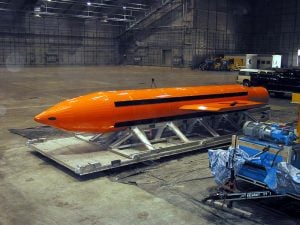
Of military significance within the U.S. conventional weapons arsenal is the 21,500-pound “monster weapon” nicknamed the “mother of all bombs” The GBU-43/B or Massive Ordnance Air Blast bomb (MOAB) was categorized “as the most powerful non-nuclear weapon ever designed” with the the largest yield in the U.S. conventional arsenal. The MOAB was tested in early March 2003 before being deployed to the Iraq war theater. According to U.S. military sources, The Joint Chiefs of Staff had advised the government of Saddam Hussein prior to launching the 2003 that the “mother of all bombs” was to be used against Iraq. (There were unconfirmed reports that it had been used in Iraq).
The U.S. Department of Defense already confirmed in 2009 that it intends to use the “Mother of All Bombs” (MOAB) against Iran. The MOAB is said to be ”ideally suited to hit deeply buried nuclear facilities such as Natanz or Qom in Iran”21. The truth of the matter is that the MOAB, given its explosive capacity, would result in significant civilian casualties. It is a conventional “killing machine” with a nuclear type mushroom cloud.
The procurement of four MOABs was commissioned in October 2009 at the hefty cost of $58.4 million, ($14.6 million for each bomb). This amount includes the costs of development and testing as well as integration of the MOAB bombs onto B-2 stealth bombers. This procurement is directly linked to war preparations in relation to Iran. The notification was contained in a ninety-three-page “reprograming memo” which included the following instructions:
“The Department has an Urgent Operational Need (UON) for the capability to strike hard and deeply buried targets in high threat environments. The MOP [Mother of All Bombs] is the weapon of choice to meet the requirements of the UON [Urgent Operational Need].” It further states that the request is endorsed by Pacific Command (which has responsibility over North Korea) and Central Command (which has responsibility over Iran).23
The Pentagon is planning on a process of extensive destruction of Iran’s infrastructure and mass civilian casualties through the combined use of tactical nukes and monster conventional mushroom cloud bombs, including the MOAB and the larger GBU-57A/B or Massive Ordnance Penetrator (MOP), which surpasses the MOAB in terms of explosive capacity.
The MOP is described as “a powerful new bomb aimed squarely at the underground nuclear facilities of Iran and North Korea. The gargantuan bomb–longer than eleven persons standing shoulder-to-shoulder or more than twenty feet base to nose”.24
These are WMDs in the true sense of the word. The not so hidden objective of the MOAB and MOP, including the American nickname used to casually describe the MOAB (“Mother of all Bombs”), is “mass destruction” and mass civilian casualties with a view to instilling fear and despair.
State of the Art Weaponry: “War Made Possible Through New Technologies”
The process of U.S. military decision making in relation to Iran is supported by Star Wars, the militarization of outer space and the revolution in communications and information systems. Given the advances in military technology and the development of new weapons systems, an attack on Iran could be significantly different in terms of the mix of weapons systems, when compared to the March 2003 Blitzkrieg launched against Iraq. The Iran operation is slated to use the most advanced weapons systems in support of its aerial attacks. In all likelihood, new weapons systems will be tested.
The 2000 Project for the New American Century (PNAC) document entitled Rebuilding American Defenses, outlined the mandate of the U.S. military in terms of large scale theater wars, to be waged simultaneously in different regions of the World: “Fight and decisively win multiple, simultaneous major theater wars”. (See Chapter I)
This formulation is tantamount to a global war of conquest by a single imperial superpower. The PNAC document also called for the transformation of U.S. forces to exploit the “revolution in military affairs”, namely the implementation of “war made possible through new technologies”. 25 The latter consists in developing and perfecting a state of the art global killing machine based on an arsenal of sophisticated new weaponry, which would eventually replace the existing paradigms.
Thus, it can be foreseen that the process of transformation will in fact be a two-stage process: first of transition, then of more thoroughgoing transformation. The breakpoint will come when a preponderance of new weapons systems begins to enter service, perhaps when, for example, unmanned aerial vehicles begin to be as numerous as manned aircraft. In this regard, the Pentagon should be very wary of making large investments in new programs –tanks, planes, aircraft carriers, for example– that would commit U.S. forces to current paradigms of warfare for many decades to come.26
The war on Iran could indeed mark this crucial break-point, with new space-based weapons systems being applied with a view to disabling an enemy which has significant conventional military capabilities including more than half a million ground forces.
Electromagnetic Weapons
Electromagnetic weapons could be used to destabilize Iran’s communications systems, disable electric power generation, undermine and destabilize command and control, government infrastructure, transportation, energy, etc. Within the same family of weapons, environmental modifications techniques (ENMOD) (weather warfare) developed under the HAARP program could also be applied.27 These weapons systems are fully operational. In this context, the U.S. Air Force document AF 2025 explicitly acknowledged the military applications of weather modification technologies:
Weather modification will become a part of domestic and international security and could be done unilaterally. … It could have offensive and defensive applications and even be used for deterrence purposes. The ability to generate precipitation, fog, and storms on earth or to modify space weather, improve communications through ionospheric modification (the use of ionospheric mirrors), and the production of artificial weather all are a part of an integrated set of technologies which can provide substantial increase in U.S., or degraded capability in an adversary, to achieve global awareness, reach, and power.28
Electromagnetic radiation enabling “remote health impairment” might also be envisaged in the war theater.29 In turn, new uses of biological weapons by the U.S. military might also be envisaged as suggested by the PNAC: “[A]dvanced forms of biological warfare that can ‘target’ specific genotypes may transform biological warfare from the realm of terror to a politically useful tool.”30
Iran’s Military Capabilities: Medium and Long-range Missiles
Iran has advanced military capabilities, including medium and long-range missiles capable of reaching targets in Israel and the Gulf States. Hence the emphasis by the U.S.-NATO Israel alliance on the use of nuclear weapons, which are slated to be used either pre-emptively or in response to an Iranian retaliatory missile attack.
In November 2006, Iran tests of surface missiles two were marked by precise planning in a carefully staged operation. According to a senior American missile expert, “the Iranians demonstrated up-to-date missile-launching technology which the West had not known them to possess.”31 Israel acknowledged that “the Shehab-3, whose 2,000-km range brings Israel, the Middle East and Europe within reach”.32
According to Uzi Rubin, former head of Israel’s anti-ballistic missile program, “the intensity of the military exercise was unprecedented… It was meant to make an impression – and it made an impression.”33
The 2006 exercises, while creating a political stir in the U.S. and Israel, did not in any way modify U.S.-NATO-Israeli resolve to wage war on Iran.
Tehran has confirmed in several statements that it will respond if it is attacked. Israel would be the immediate object of Iranian missile attacks as confirmed by the Iranian government. The issue of Israel’s air defense system is therefore crucial. U.S. and allied military facilities in the Gulf states, Turkey, Saudi Arabia, Afghanistan and Iraq could also be targeted by Iran.
Iran’s Ground Forces
While Iran is encircled by U.S. and allied military bases, the Islamic Republic has significant military capabilities. What is important to acknowledge is the sheer size of Iranian forces in terms of personnel (army, navy, air force) when compared to U.S. and NATO forces serving in Afghanistan and Iraq.
Confronted with a well-organized insurgency, coalition forces are already overstretched in both Afghanistan and Iraq. Would these forces be able to cope if Iranian ground forces were to enter the existing battlefield in Iraq and Afghanistan? The potential of the Resistance movement to U.S. and allied occupation would inevitably be affected.
Iranian ground forces are of the order of 700,000 of which 130,000 are professional soldiers, 220,000 are conscripts and 350,000 are reservists.34 There are 18,000 personnel in Iran’s Navy and 52,000 in the Air Force. According to the International Institute for Strategic Studies, “the Revolutionary Guards has an estimated 125,000 personnel in five branches: Its own Navy, Air Force, and Ground Forces; and the Quds Force (Special Forces).”
According to the CISS, Iran’s Basij paramilitary volunteer force controlled by the Revolutionary Guards “has an estimated 90,000 active-duty full-time uniformed members, 300,000 reservists, and a total of 11 million men that can be mobilized if need be”35, In other words, Iran can mobilize up to half a million regular troops and several million militia. Its Quds special forces are already operating inside Iraq.
U.S. Military and Allied Facilities Surrounding Iran
For several years now, Iran has been conducting its own war drills and exercises. While its Air Force has weaknesses, its intermediate and long-range missiles are fully operational. Iran’s military is in a state of readiness. Iranian troop concentrations are currently within a few kilometers of the Iraqi and Afghan borders, and within proximity of Kuwait. The Iranian Navy is deployed in the Persian Gulf within proximity of U.S. and allied military facilities in the United Arab Emirates.
It is worth noting that in response to Iran’s military build-up, the U.S. has been transferring large amounts of weapons to its non-NATO allies in the Persian Gulf including Kuwait and Saudi Arabia.
While Iran’s advanced weapons do not measure up to those of the U.S. and NATO, Iranian forces would be in a position to inflict substantial losses to coalition forces in a conventional war theater, on the ground in Iraq or Afghanistan. Iranian ground troops and tanks in December 2009 crossed the border into Iraq without being confronted or challenged by allied forces and occupied a disputed territory in the East Maysan oil field.
Even in the event of an effective Blitzkrieg, which targets Iran’s military facilities, its communications systems etc., through massive aerial bombing, using cruise missiles, conventional bunker buster bombs and tactical nuclear weapons, a war with Iran, once initiated, could eventually lead into a ground war. This is something which U.S. military planners have no doubt contemplated in their simulated war scenarios.
An operation of this nature would result in significant military and civilian casualties, particularly if nuclear weapons are used.
Within a scenario of escalation, Iranian troops could cross the border into Iraq and Afghanistan.
In turn, military escalation using nuclear weapons could lead us into a World War III scenario, extending beyond the Middle-East – Central Asian region.
In a very real sense, this military project, which has been on the Pentagon’s drawing board for more than ten years, threatens the future of humanity.
Our focus in this chapter has been on war preparations. The fact that war preparations are in an advanced state of readiness does not imply that these war plans will be carried out.
The U.S.-NATO-Israel alliance realizes that the enemy has significant capabilities to respond and retaliate. This factor in itself has been crucial in the decision by the U.S. and its allies to postpone an attack on Iran.
Another crucial factor is the structure of military alliances. Whereas NATO has become a formidable force, the Shanghai Cooperation Organization (SCO), which constitutes an alliance between Russia and China and a number of former Soviet Republics has been significantly weakened.
The ongoing U.S. military threats directed against China and Russia are intended to weaken the SCO and discourage any form of military action on the part of Iran’s allies in the case of a U.S. NATO Israeli attack.
*
Note to readers: please click the share buttons below. Forward this article to your email lists. Crosspost on your blog site, internet forums. etc.
Notes
1. See Target Iran – Air Strikes, Globalsecurity.org, undated.
2. William Arkin, Washington Post, April 16, 2006.
3. Ibid.
4. New Statesman, February 19, 2007.
5. Philip Giraldi, Deep Background,The American Conservative August 2005.
6. U.S.CENTCOM, http://www.milnet.com/milnet/pentagon/centcom/chap1/stratgic.htm#U.S.Policy, link no longer active, archived at http://tinyurl.com/37gafu9.
7. General Wesley Clark, for further details see Chapter I.
8. See Michel Chossudovsky, Planned U.S.-Israeli Attack on Iran, Global Research, May 1, 2005.
9. Dick Cheney, quoted from an MSNBC Interview, January 2005.
10. According to Zbigniew Brzezinski.
11. Michel Chossudovsky, Unusually Large U.S. Weapons Shipment to Israel: Are the U.S. and Israel Planning a Broader Middle East War? Global Research, January 11, 2009.
12. Defense Talk.com, January 6, 2009.
13. Quoted in Israel National News, January 9, 2009.
14. Webster Tarpley, Fidel Castro Warns of Imminent Nuclear War; Admiral Mullen Threatens Iran; U.S.-Israel versus Iran-Hezbollah Confrontation Builds On, Global Research, August 10, 2010.
15. Michel Chossudovsky, Nuclear War against Iran, Global Research, January 3, 2006.
16. David Ruppe, Pre-emptive Nuclear War in a State of Readiness: U.S. Command Declares Global Strike Capability, Global Security Newswire, December 2, 2005.
17. U.S. Nuclear Option on Iran Linked to Israeli Attack Threat – IPS ipsnews.net, April 23, 2010.
18. Revealed: Israel plans nuclear strike on Iran – Times Online, January 7, 2007.
19. Opponents Surprised By Elimination of Nuke Research Funds, Defense News, November 29, 2004.
20. See Michel Chossudovsky, “Tactical Nuclear Weapons” against Afghanistan?, Global Research, December 5,
2001. See also http://www.thebulletin.org/article_nn.php?art_ofn=jf03norris.
21. Jonathan Karl, Is the U.S. Preparing to Bomb Iran? ABC News, October 9, 2009.
22. Ibid.
23. ABC News, op cit, emphasis added. To consult the reprogramming request (pdf) click here.
24. See Edwin Black, “Super Bunker-Buster Bombs Fast-Tracked for Possible Use Against Iran and North Korea Nuclear Programs”, Cutting Edge, September 21, 2009.
25. See Project for a New American Century, Rebuilding America’s Defenses Washington DC, September 2000, pdf.
26. Ibid, emphasis added.
27. See Michel Chossudovsky, “Owning the Weather” for Military Use, Global Research, September 27, 2004.
28. Air Force 2025 Final Report, See also U.S. Air Force: Weather as a Force Multiplier: Owning the Weather in 2025, AF2025 v3c15-1.
29. See Mojmir Babacek, Electromagnetic and Informational Weapons:, Global Research, August 6, 2004.
30. Project for a New American Century, op cit., p. 60.
31. See Michel Chossudovsky, Iran’s “Power of Deterrence” Global Research, November 5, 2006.
32. Debka, November 5, 2006.
33. www.cnsnews.com November 3, 2006.
34. See Islamic Republic of Iran Army – Wikipedia.
35. Ibid.
Featured image is from The Unz Review

Michel Chossudovsky
The “globalization of war” is a hegemonic project. Major military and covert intelligence operations are being undertaken simultaneously in the Middle East, Eastern Europe, sub-Saharan Africa, Central Asia and the Far East. The U.S. military agenda combines both major theater operations as well as covert actions geared towards destabilizing sovereign states.
ISBN Number: 978-0-9737147-6-0
- Year: 2015
- Pages: 240 Pages
List Price: $22.95
Special Price: $15.00
Click here to order.

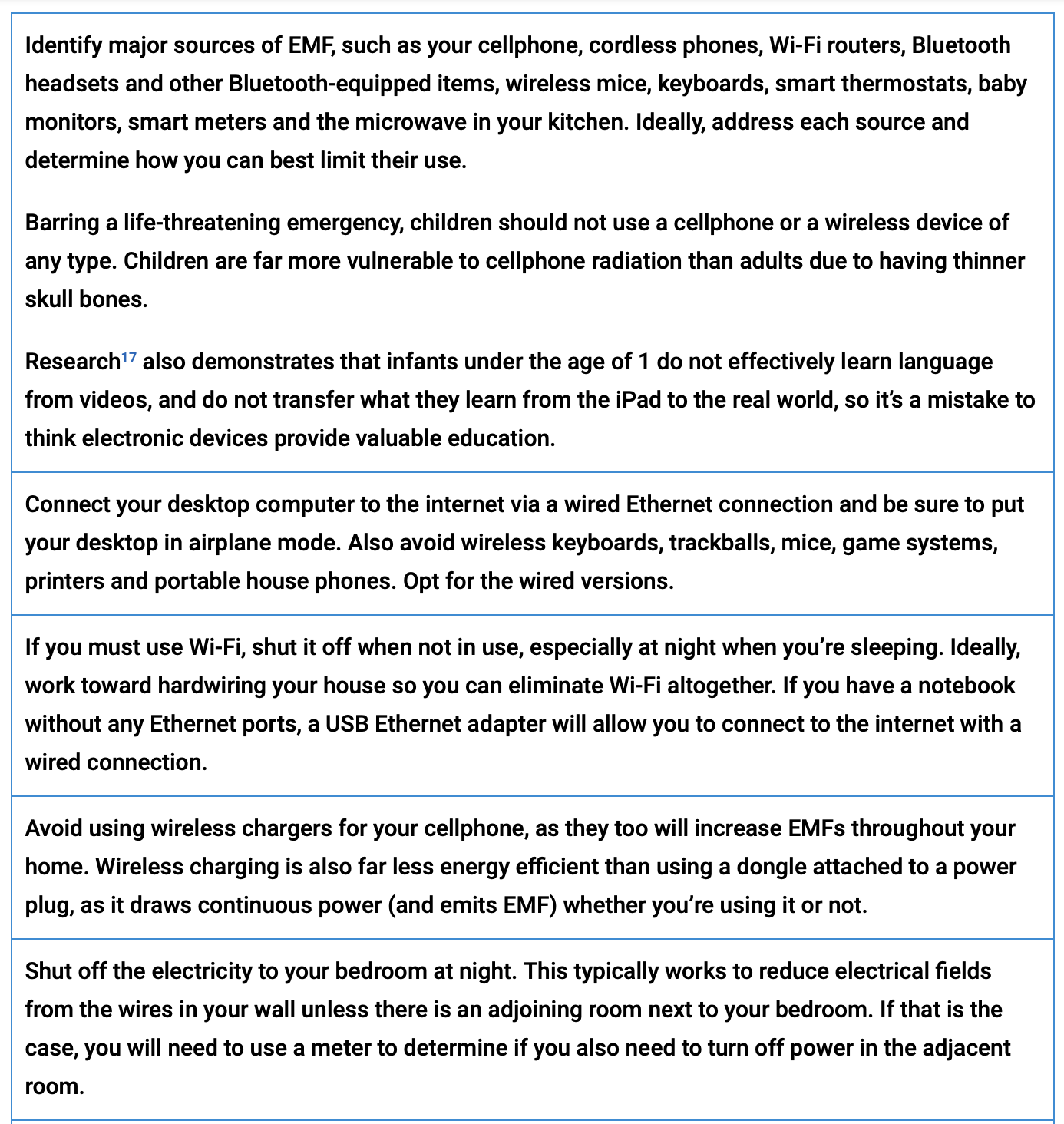


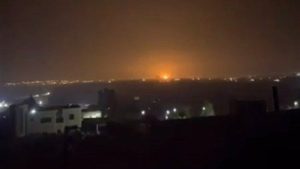

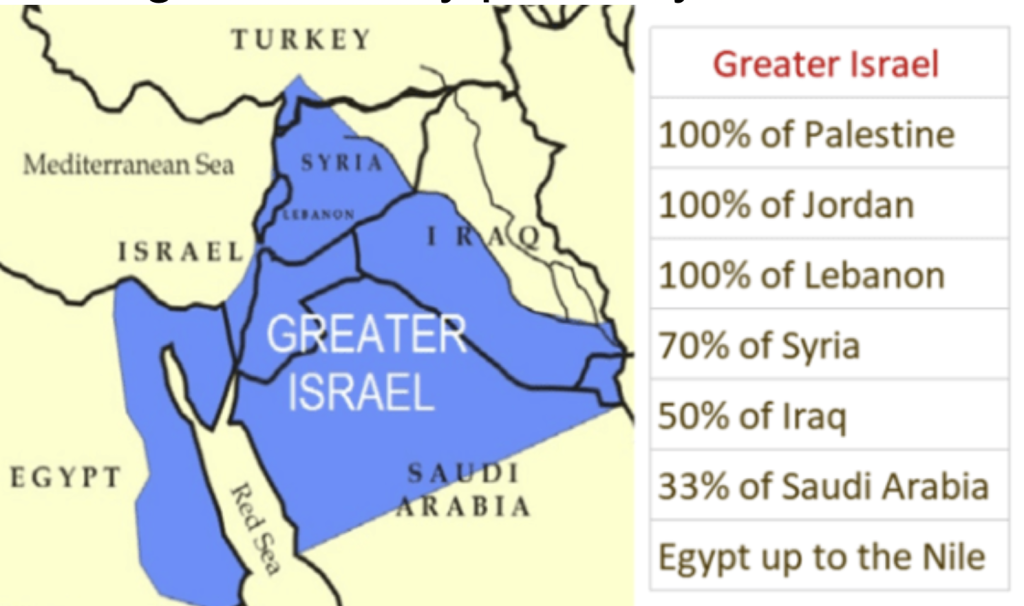
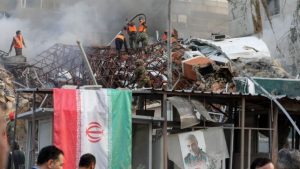


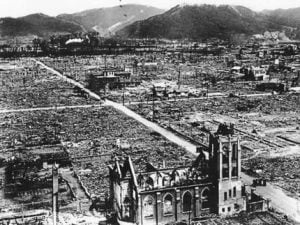

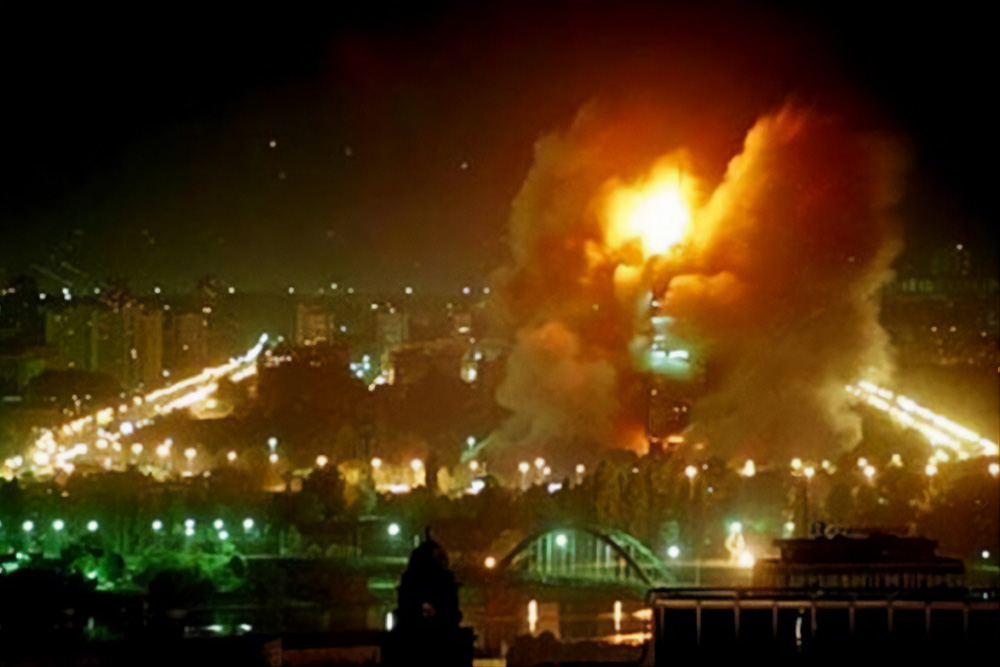
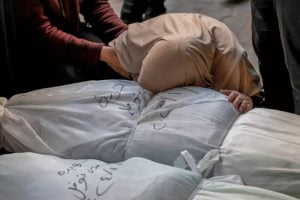
 Philosophy Reaching Insight into the Nature of Reality
Philosophy Reaching Insight into the Nature of Reality Philosophy seeks a unitive and holistic understanding of things instead of looking at things from the point of view of separateness and divisiveness.
Philosophy seeks a unitive and holistic understanding of things instead of looking at things from the point of view of separateness and divisiveness.

 And yet, Philosophy is very crucial and relevant discipline if we are to establish a humanistic education since it is Philosophy that puts the “mind, heart, and soul” as well as humanness, humane-ness, and proper humanity to the human person.
And yet, Philosophy is very crucial and relevant discipline if we are to establish a humanistic education since it is Philosophy that puts the “mind, heart, and soul” as well as humanness, humane-ness, and proper humanity to the human person.



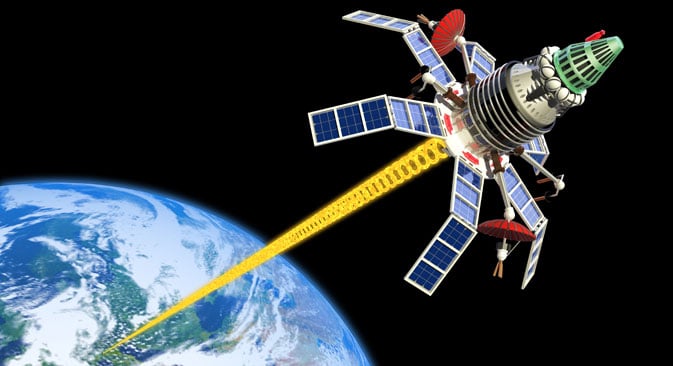

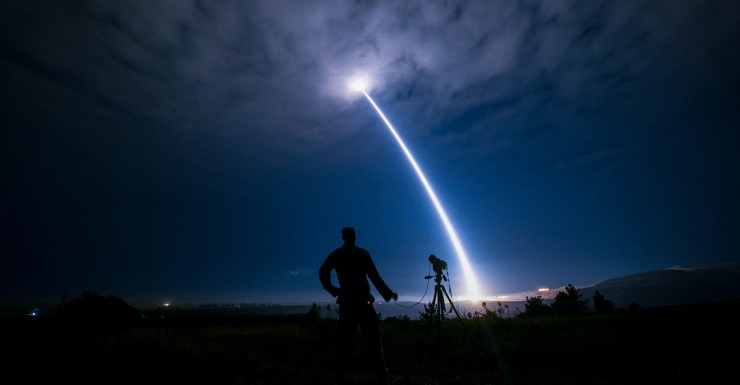



 German Government Admits There Was No Pandemic
German Government Admits There Was No Pandemic The Next Crisis “Bigger than Covid”: Paralysis of Power Supply, Communications, Transportation. The WEF “Cyber Attack” Scenario, “Usher In the Great Reset”
The Next Crisis “Bigger than Covid”: Paralysis of Power Supply, Communications, Transportation. The WEF “Cyber Attack” Scenario, “Usher In the Great Reset” “Russia Losing”: Biden Administration Admits It Lied. “Why is Russia Winning All of a Sudden”?
“Russia Losing”: Biden Administration Admits It Lied. “Why is Russia Winning All of a Sudden”? A Bridge Too Far. The Collapse of the Francis Scott Key Bridge. Was it An Accident?
A Bridge Too Far. The Collapse of the Francis Scott Key Bridge. Was it An Accident? Video: Climate – The Cold Truth. The Massive Scam which Promotes Global Warming / Climate Change
Video: Climate – The Cold Truth. The Massive Scam which Promotes Global Warming / Climate Change Biden-Netanyahu Secret Agreement? Leave Gaza and Attack Iran? Escalation in the Middle East
Biden-Netanyahu Secret Agreement? Leave Gaza and Attack Iran? Escalation in the Middle East Shocking Moment Hillary Clinton Is Branded a ‘Super Predator’ While Husband Bill Is Told He’s a ‘Piece of S**t’ to His Face by Anti-Israel Protesters in NYC
Shocking Moment Hillary Clinton Is Branded a ‘Super Predator’ While Husband Bill Is Told He’s a ‘Piece of S**t’ to His Face by Anti-Israel Protesters in NYC Baltimore’s Frances Scott Key Bridge Disaster Declared a “Crime Scene”
Baltimore’s Frances Scott Key Bridge Disaster Declared a “Crime Scene” Video: “Wiping Gaza Off The Map”: Big Money Agenda. Confiscating Palestine’s Maritime Natural Gas Reserves
Video: “Wiping Gaza Off The Map”: Big Money Agenda. Confiscating Palestine’s Maritime Natural Gas Reserves Video: Putin Dares Macron to Trigger World War III. Gives a Chilling Warning After Macron Reiterates Sending NATO Troops to Ukraine
Video: Putin Dares Macron to Trigger World War III. Gives a Chilling Warning After Macron Reiterates Sending NATO Troops to Ukraine Putin’s Road to Armageddon?
Putin’s Road to Armageddon? Will Paris ’24 be the Genocidal Olympics?
Will Paris ’24 be the Genocidal Olympics? Just Nuke Gaza, Get It Over Quick, Advises US Representative Tim Walberg, Evangelical Zionist
Just Nuke Gaza, Get It Over Quick, Advises US Representative Tim Walberg, Evangelical Zionist Could Avian H5N1 Influenza be Disease X for the Bio-Pharmaceutical Complex?
Could Avian H5N1 Influenza be Disease X for the Bio-Pharmaceutical Complex? WEF’s Great Reset: The Great Dispossession. The Loss of Property Rights in Financial Assets. “Own Nothing Be Happy”
WEF’s Great Reset: The Great Dispossession. The Loss of Property Rights in Financial Assets. “Own Nothing Be Happy” Putin Has Allowed the Ukraine Conflict to Spiral Out of Control
Putin Has Allowed the Ukraine Conflict to Spiral Out of Control Doctors Report Mysterious Worldwide Cancer ‘Epidemic’
Doctors Report Mysterious Worldwide Cancer ‘Epidemic’ Hawai’i—The Very First U.S. Regime Change
Hawai’i—The Very First U.S. Regime Change Influenza H5N1 Fear-mongering Is Flooding the News. Perfect Candidate for “Disease X”? How to Protect Against H5N1
Influenza H5N1 Fear-mongering Is Flooding the News. Perfect Candidate for “Disease X”? How to Protect Against H5N1 A Turbo Cancer “Dual Diagnosis” Phenomenon in the COVID-19 Vaccinated
A Turbo Cancer “Dual Diagnosis” Phenomenon in the COVID-19 Vaccinated
 The Worldwide Corona Crisis, Global Coup d’Etat Against Humanity
The Worldwide Corona Crisis, Global Coup d’Etat Against Humanity
 日本語の序文のテキスト.
日本語の序文のテキスト.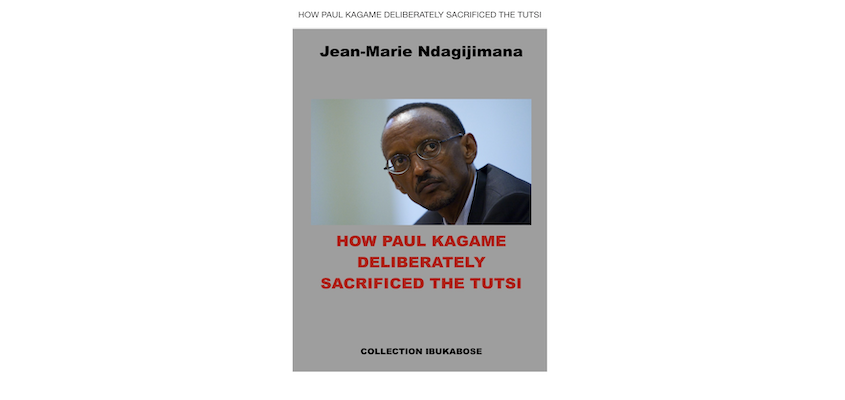

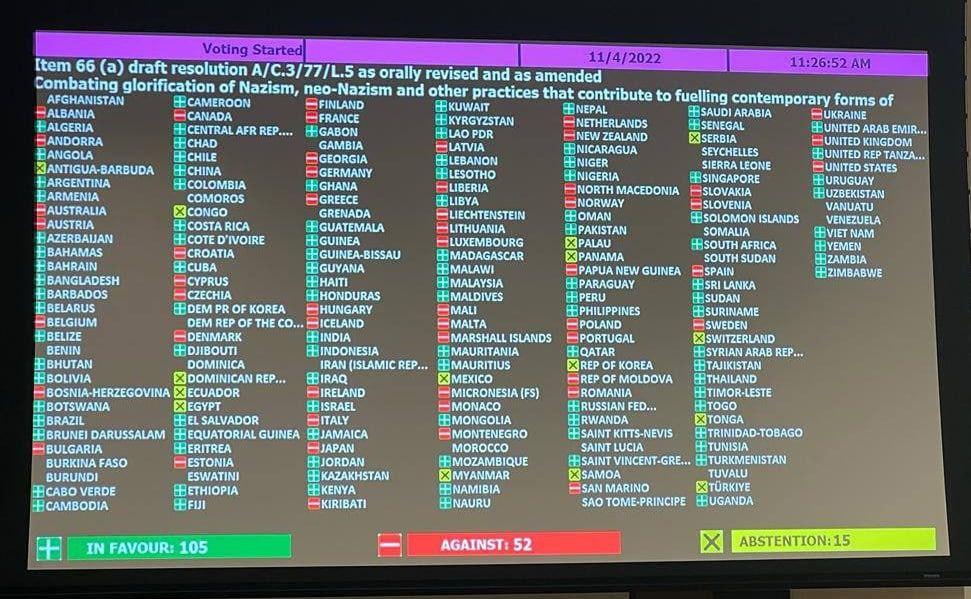
 Rethinking Srebrenica
Rethinking Srebrenica




































